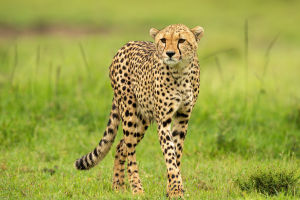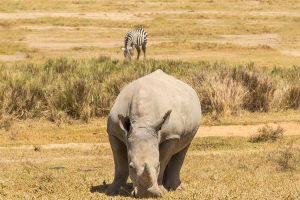As an ancient domestic animal, sheep has played a significant role in human history. They not only provide us with meat, milk, and wool but also hold a unique place in many cultures.
This article will delve into the biological characteristics, lifestyle, ecological roles, and relationship with humans of this animal.
1. Biological Characteristics
Sheep are ruminants belonging to the family Bovidae.
They possess four stomach chambers: the rumen, reticulum, omasum, and abomasum, which enable them to efficiently digest plant-based food. One of the most notable features of sheep is their wool, which provides excellent insulation and protection in various climatic conditions.
Sheep exhibit a wide range of body sizes, from small miniatures to large meat breeds. They typically have a pair of curved horns, though some breeds, such as polled sheep, lack horns. Underneath their skin, sheep have a thick layer of fat that helps them retain warmth in cold environments and provides additional energy reserves.
2. Lifestyle
Sheep are social animals with a strong herd instinct. They tend to form stable groups, and this social structure is crucial for their survival and reproduction.
Sheep communicate with each other through body language and vocalizations. For example, they use bleating to convey their location, and emotions, or to alert other members of the flock.
In terms of diet, sheep primarily feed on grasses, leaves, and legumes such as alfalfa. Their digestive system can convert coarse fibrous plants into nutrients. To maintain their health, sheep need to be rotated to different pastures to prevent overgrazing and environmental degradation.
Sheep have a breeding cycle of about one year, with spring and autumn being the main breeding seasons. Ewes typically give birth to one to three lambs per litter. During lambing, ewes require special nutritional support to ensure the healthy growth of the lambs.
3. Ecological Role
Sheep play multiple roles in ecosystems. As grazing animals, they have a significant impact on plant communities. Grazing by sheep helps control the growth of certain plants and maintains plant diversity.
Additionally, sheep manure acts as a natural fertilizer rich in nutrients like nitrogen, phosphorus, and potassium, which enhances soil fertility and plant growth. In traditional agriculture, sheep manure has been used as organic fertilizer, effectively reducing the reliance on chemical fertilizers.
4. Relationship with Humans
The relationship between sheep and humans is both long-standing and complex. The domestication of sheep dates back approximately 10,000 years to the Middle East.
Early sheep were domesticated for their meat, milk, and wool. These animals provided essential resources in agricultural societies and held deep symbolic significance in various cultures.
In modern society, sheep continue to offer significant economic value. Wool is widely used in the textile industry to produce various garments and home goods. Sheep meat and milk are important in the diets of many countries. Particularly in regions such as the Middle East and South Asia, sheep meat is a key traditional food.
Furthermore, sheep also play an important role in scientific research. Due to their relatively simple genetic structure, sheep serve as ideal model animals for studying genomics and livestock genetics. For instance, the famous "Dolly the Sheep" was the first animal cloned from an adult somatic cell, marking a breakthrough that opened new avenues in biotechnology.
5. Challenges and Conservation
Despite their valuable contributions to human society, sheep face various challenges.
Environmental changes, diseases, and habitat loss threaten their survival. For example, climate change may lead to pasture degradation, impacting food availability for sheep. Additionally, sheep are susceptible to parasites and diseases, necessitating effective management and preventative measures.
To protect sheep and their habitats, many countries and regions have implemented measures such as sustainable grazing programs, enhanced animal health monitoring, and biodiversity conservation initiatives. These efforts not only help preserve sheep as an important species but also maintain the stability and diversity of ecosystems.
Conclusion
As animals with a long history and widespread influence, sheep's biological characteristics, lifestyle, ecological roles, and relationship with humans highlight their importance.
Understanding these aspects helps us manage and protect these animals better and deepens our understanding of the interplay between nature and human society. Through scientific research and sustainable practices, we can ensure that sheep continue to make positive contributions to both humans and ecosystems in the future.


